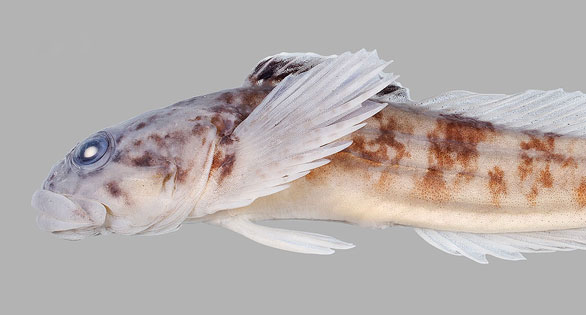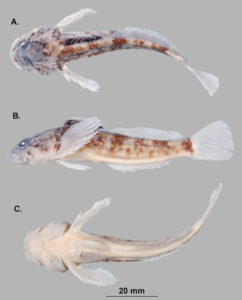A new species of freshwater sculpin from the pristine waters of the northern Rocky Mountains has been found and described, and its small size and droll character may make it a candidate for keeping in aquarium collections of native fishes. Scientists say the discovery of a new species of fish in the well-studied waters of North America is a rare event.
The discovery followed genetic surveys of fishes in the upper Columbia River basin, scientists from the U.S. Forest Service Rocky Mountain Research Station suspected the presence of several undescribed species of small sculpins.
Colleagues at the University of Montana confirmed these suspicions after conducting morphological studies, which revealed subtle but consistent differences between one of these “new” species and the previously suspected species, the Shorthead Sculpin, Cottus confusus, which grows to lengths of just two to four inches (5-10 cm) and is considered an important forage fish for larger trout.
Further genetic tests at the Wildlife Genetics Lab in Missoula, Montana, corroborated these results, which led to the description of a new species of fish in the northern Rocky Mountains.
Homeland of the Coeur d’Alene People
The new species was discovered in the Coeur d’ Alene and St. Joe River basins in Idaho and part of the Clark Fork River basin in Montana. Because the current range of this fish overlaps the historical homeland of the Coeur d’ Alene Tribe, the scientists consulted with Tribal elders to select a scientific name for the new species.
This led to the naming of the species as Cottus schitsuumsh (s-CHEET-sue-umsh), the Cedar Sculpin. Translated, Schitsu’umsh means “those who were found here” and is the name for the Tribe. The common name refers to the western Redcedar, a tree often found in streamside stands in this region.
Sculpins, often the only small fish found in headwater streams, provide two significant resources – an important food source for sport fish such as large trout, and an indicator of water quality. This particular species is common to abundant in cold tributaries that also support Westslope Cutthroat Trout and Bull Trout.
“Recognizing species of sculpins is a challenge because even distantly related species look very much alike. So rather than taking a morphological approach to identification, we used genetic methods to delineate the species,” Forest Service research fisheries biologist Michael Young said. “It’s really exciting to find a new species of fish. It’s something you might expect in more remote parts of the world, but not in the U.S.”
SOURCES
From materials released by the US Fish & Wildlife Service Rocky Mountain Research Station.
Read more or download a copy of the report published in Zootaxa: Cottus schitsuumsh, a new species of sculpin (Scorpaeniformes: Cottidae in the Columbia River basin, Idaho-Montana, USA) at www.treesearch.fs.fed.us/pubs/45377.
Image Credits:
Cedar Sculpin: US Fish & Wildlife Service
St. Joe River: St. Joe River in St Joe National Forest / Idaho Panhandle National Forest image by Greg Tensmeyer/Wikipedia








